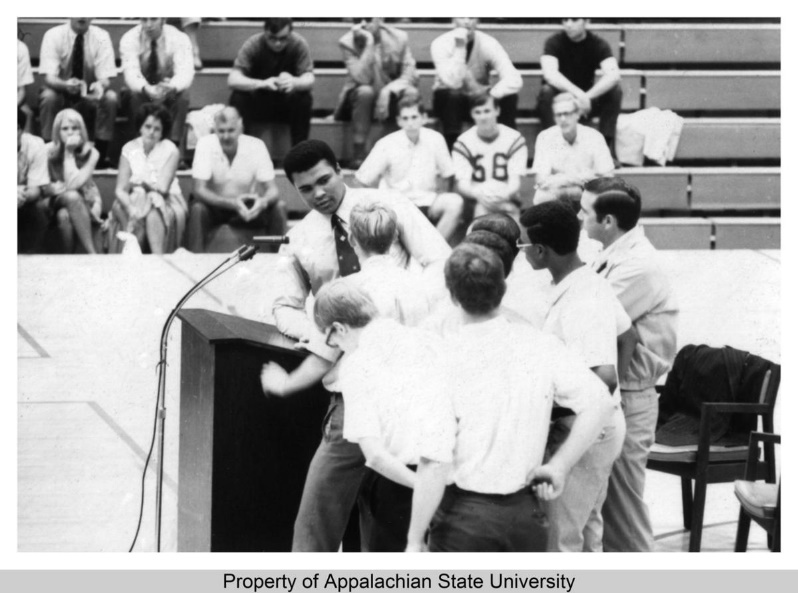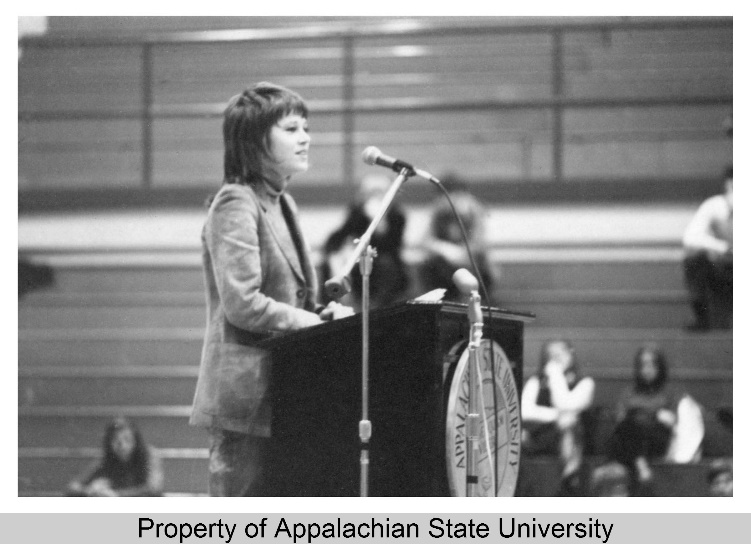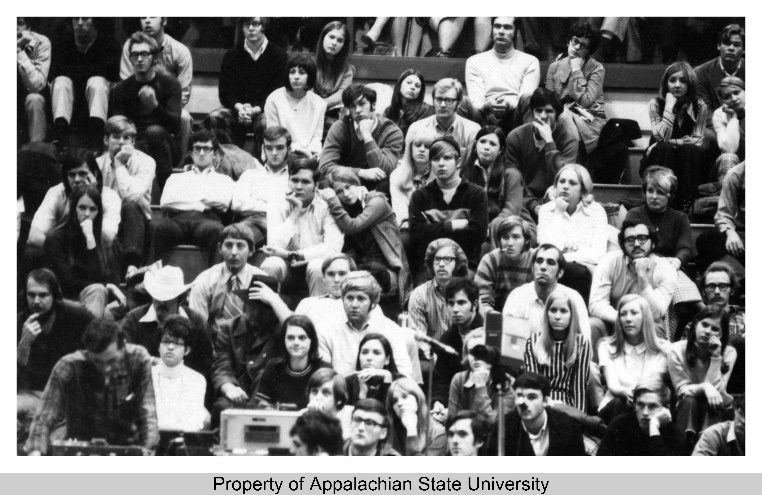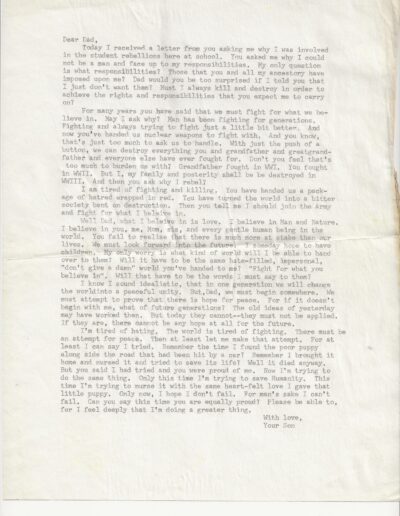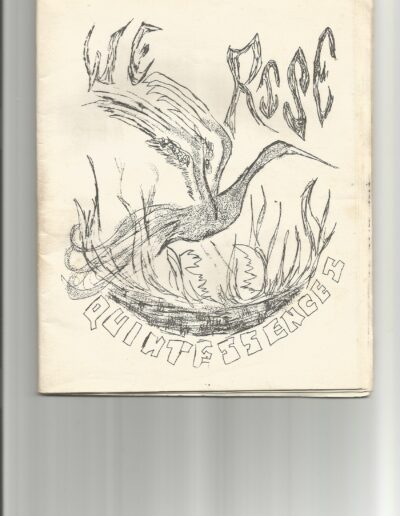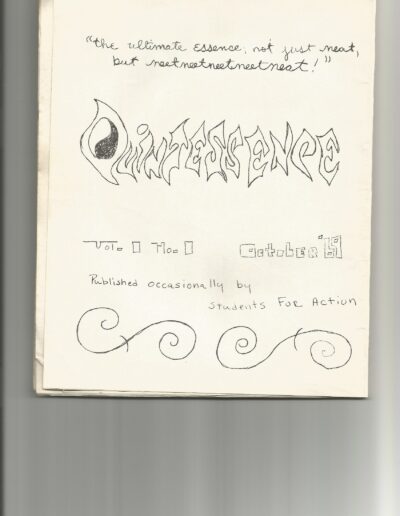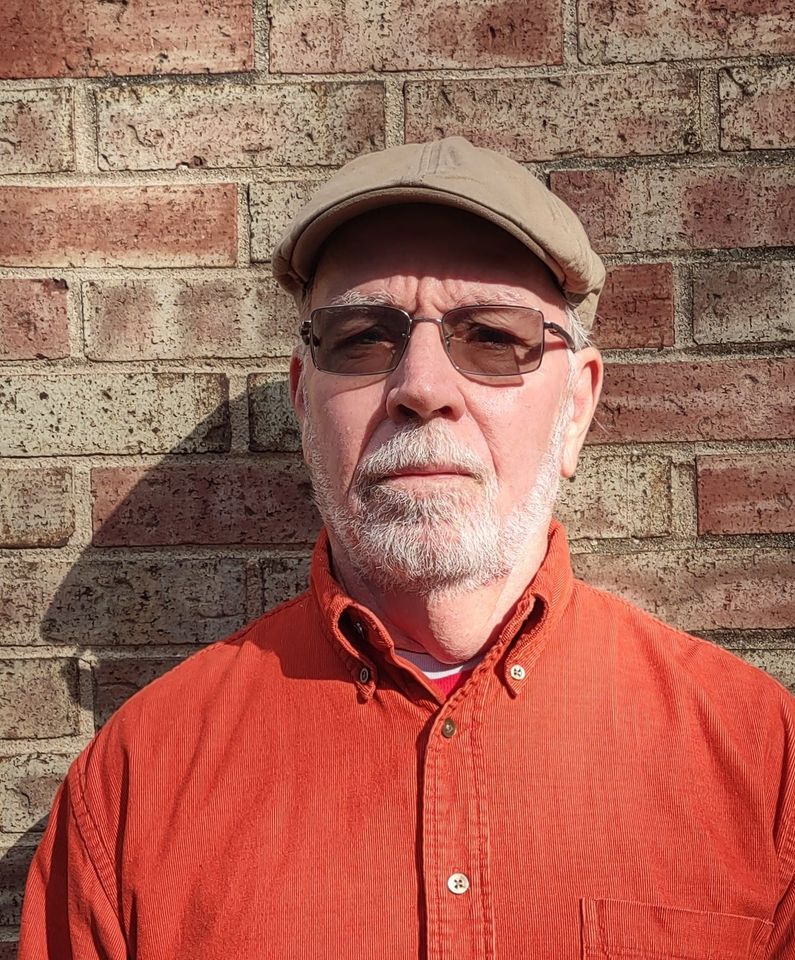The Age of Protest
“It was the best of times, it was the worst of times, it was the age of wisdom, it was the age of foolishness, it was the epoch of belief, it was the epoch of incredulity, it was the season of light, it was the season of darkness, it was the spring of hope, it was the winter of despair.”
-Charles Dickens, A Tale of Two Cities
Dickens best described my experience at Appalachian State University. I enrolled in the fall of 1967. However, that fall there was a fire in the administration building that destroyed many student records. I had to register again, and I didn’t begin classes until winter quarter of 1968. This should have been an omen of what was to come. The next four years were the best years of my life, and in some cases the worst.
I was a small-town boy. I graduated from a rural school with little understanding of world events. Four years later, I graduated with a doctor’s degree in life. The late 1960’s and early 1970’s was a turbulent time in America. We were engaged in an unpopular war in Vietnam. Students were protesting in college campuses across America. Young men were being drafted from high school, and men like myself faced enlistment upon graduation.
There was a cultural revolution sweeping America. Long hair, peace signs, bell bottom pants, protest music and drugs were becoming predominant with the youth. Oddly, when I entered ASU, it seemed like the rural mountains of the Appalachians had been unaffected by cultural changes. I, myself, had yet been influenced by the changes sweeping the college campuses.
However, something changed my sophomore year. As the war raged on, and our country continued to be bogged down in Vietnam, I began to realize that we must get out. I began to identify with the war protesters on other college campuses. I knew that I could no longer remain silent while young men my age were dying in the jungles of Vietnam.
Many of my friends fell into the drug scene. Almost weekly, a friend would leave campus, never to be seen again. What happened to them, I’ll never know. I let my hair grow long, and I grew a beard. However, I didn’t identify as a hippie, but as a war protester. Since I was the only member of my family to attend college, I was determined to do well. I majored in social studies and education. It had been my dream since a young boy to teach. I didn’t want anything to interrupt that dream. I never became trapped in the drug scene. I didn’t avoid it, but I never participated. I attended numerous parties where marijuana was smoked, and I witnessed friends on LSD trips. Those were the two popular drugs at that time. We also talked of life, and what we wanted to accomplish. Dying in Vietnam was not in our plans.
Soon, we became the scourge of ASU. Even though we were never physically harmed, we were looked upon with disdain. Many of us were from the North, and we were considered carpetbaggers. One professor even referred to us as that in his classes. We formed a tight-knit community among ourselves, knowing that we could find acceptance with those who held similar beliefs.
I had experiences at ASU that were exciting. I was leaving class my junior year and heading to my dorm. It was September 18, 1969. As I descended the outside stairs, I looked down, and Muhammad Ali was standing alone at the bottom! He had been banned from boxing because he refused to enlist in the military because of his Muslim beliefs. He was giving anti-war speeches on college campuses. That evening he was to speak in the gymnasium. He asked me if I could take him to the student union. For ten minutes, I got to spend time alone with him. I don’t remember what we talked about, but I did have him sign his autograph on a piece of paper which I have kept all theseyears. It was, and always has been, the greatest thrill of my life.
A year later, on November 5, 1970, actress Jane Fonda spoke at ASU. She was an outspoken opponent of the war. I attended her speech in the auditorium. Afterwards, I went backstage and personally met her. She had stayed at the home of my history professor, Dr. George Anton. He introduced me to her. A friend and I had a very enlightening fifteen minute discussion with her about the war.
By my junior year, I was firmly opposed to the war. A small group of us began to mobilize. We felt the need to do something. It was then that we decided to write a pamphlet expressing our opposition to the war. It wasn’t anything sensational. It was composed mainly of poems, short stories and artwork. We worked on it for several weeks. We chose a date and stood outside the student union and handed it to our fellow students. Most students refused to accept it. Others tossed it into a nearby trash can. I have kept a copy for fifty years. I recently donated it to the Cold Mountain Review. I feel it reflects an important time in Appalachian State history unknown to most people.
One of the worst days of my life also occurred my junior year. It is etched in my memory forever- May 4, 1970. That is the day that the Ohio National Guard opened fire on war protesters at Kent State University. They were doing what we were doing- protesting a war we didn’t believe in. Four died and nine others were injured. I walked around numb for days. I couldn’t believe that our government had opened fire on unarmed college students. It changed my world. I cried when I looked at the pictures. One picture today, that of Jeffrey Miller, still affects me. He and I were almost identical. Our backgrounds were the same, and our appearances were hauntingly similar. When I saw him lying on the ground, I saw myself. I had been accepted at Kent State, and it was my second college choice. If I had gone there, I would have been protesting the war that day. I could have been him.
After the Kent state killings, we planned a moratorium march across campus. A small group met with Dr. Wey, the President of ASU. We decided a date and time for the march. On the evening we marched, students mocked us and threw eggs. Dr. Wey marched with us, and eggs were thrown at him. I was saddened by other students’ actions and cruel behavior.
This year, fifty-two years later, I visited Kent State University and toured the May 4th Visitors Center. It was a very emotional day. When I exited my car, the first thing I saw were the barriers that identified where the students died in the parking lot. I toured the center, and then I took a walking tour of where things occurred on that fateful day. It still seems like it only happened yesterday.
Fifty years later, I look back on my college years with bittersweet memories. They molded me into the man I have become. I was drafted when I graduated, but as luck would have it, the draft was terminated the month before I had to appear. I was prepared to face prison because I would have refused to go to Vietnam.
Instead, I dedicated my life to helping others. I became a teacher for thirty-two years. I taught primarily in non-traditional schools. I taught incarcerated young boys, and I taught at an alternative school. For twenty-five years, I taught in an inner-city high school with a ninety-seven percent Black student population. After retiring, I became a gay author writing stories for gay teens. I write to let them know that it is okay to be gay. I have been in an interracial gay relationship for forty-four years. We married eight years ago. Fifty years later, I have never lost the idealist dreams that were embedded in my soul during my four years at ASU. I still believe in making the world a better place.
It was the best of times, it was the worst of times.

